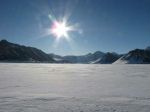
A graphical aid used in fire weather forecasting to calculate the degree of forest-fire danger (or burning index). Commonly in the form of a circular slide rule, the firedanger meter relates numerical indices of (a) the seasonal stage of foliage, (b) the ...

